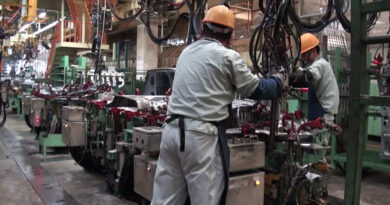Strategies to Manage Asset Performance
Creating a world that doesn’t break down offers the process industries a $20 billion opportunity. Reducing unplanned downtime and increasing asset utilization represent the biggest opportunities for financial improvement in production operations. Albert Einstein could have been alluding to smart manufacturing when he said, “If I had an hour to solve a problem and my life depended on it, I would use the first 55 minutes determining the proper question to ask, for once I know the proper question, I could solve the problem in less than five minutes.”
The Evolution of Maintenance
For the past five decades, maintenance as a practice has evolved to better serve manufacturing in the areas of reliability and availability, with increasingly complex frameworks. However, change is imminent. The current approaches, such as run-to-failure, calendar-based, usage-based, condition-based and reliability-centered maintenance (RCM), are challenged by the lack of science behind machine inspection and service. Current maintenance methodologies focus on wear and tear as the root cause of failure, but 80 percent of degradation and failure in mechanical equipment is process driven.
Today’s industry reality is that in order to maximize profitability, processes tend to be operated as close to key limits as possible. However, process excursions can place an asset in an undesirable operating point where damage or excessive wear and tear will occur. For accurate, fact-based maintenance decisions, a better understanding of the impact of the process on the asset is needed. A new generation of analytical capabilities is required to provide deeper insights into the asset, process and interaction between them. Operators need predictive solutions to alert them to impending trouble, and the software must be able to guide them away from trouble with prescriptive guidance. Insights of this nature require deep process modeling expertise together with big-data machine learning capabilities that can extract and analyze data from design, production and maintenance systems.
Next-generation Asset Performance Management
The next generation of asset performance management offers the ability to maximize uptime with actionable data and accurately predict and eliminate the root cause of all failures. It represents the future of manufacturing with advanced analytics that can predict issues and prescribe operator actions. Advanced data analytics and data science enable the reliability strategy, which includes machine learning. To add value to capital-intensive industrial assets, machine learning needs to interpret and manage complex, problematic sensor and maintenance event data. Eventually, it can determine the operating conditions and patterns that can have an adverse impact on the asset by capturing the patterns of process operation and merging them with failure information.
A System of Success
While predictive analytics can reduce downtime, a disruption seldom happens in isolation. Instead, dozens of reliability, process and asset issues occur simultaneously. This presents a systemic problem for RCM, a current maintenance approach that conducts static assessments by delaying the decision-making process. Dynamic assessment is required, as new warnings need to be evaluated alongside other active conditions to prioritize and allocate resources. However, since everything cannot be addressed at once, a system of success is needed to address problems and prioritize them according to the level of risk they represent. With advanced software, each new alarm can trigger a recalculation of risk profiles to guarantee that the most current financial and risk probability assessment is used in reliability assessments.
Of course, to be completely successful, companies must adopt a holistic approach to implementation, which includes the following steps:
- Communicate goals clearly to help in effective problem-solving
- Embrace a data-driven world
- Differentiate between lagging and leading indicators, as well as how to respond accordingly
- Employ the right mix of people, technology, strategy and solution, along with the use of relevant use cases
- Invest time to master the technology
- Align adopted analytics program with business goals
- Deploy the appropriate software and hardware to solve problems
- Execute well and with a keen sense of urgency.
With operational excellence and profitability at stake, it is a business imperative to develop an effective asset performance strategy. Failure is not an option with technology that helps create a world that doesn’t break down.




